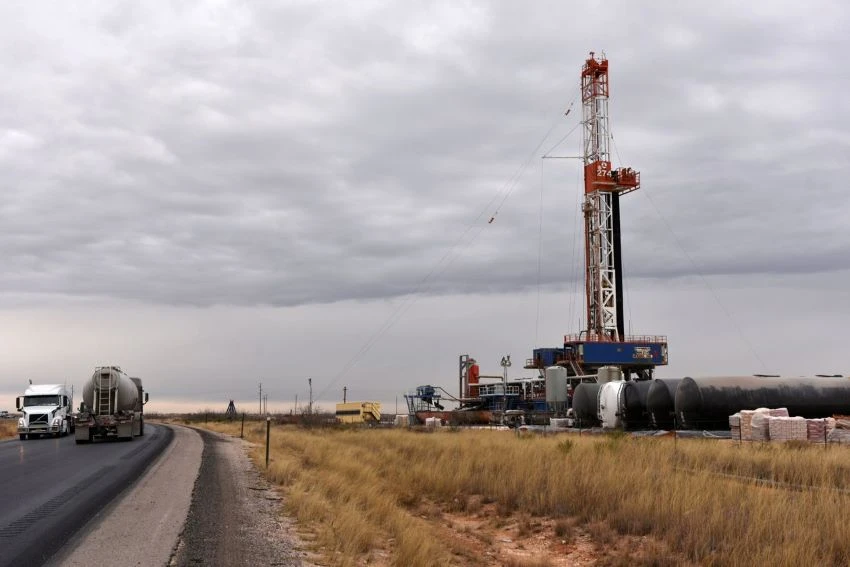
Bankruptcies are rising in the U.S. oil patch as Wall Street’s disaffection with shale companies reverberates through the industry.
Twenty-six U.S. oil-and-gas producers including Sanchez Energy Corp. and Halcón Resources Corp. have filed for bankruptcy this year, according to an August report by the law firm Haynes & Boone LLP. That nearly matches the 28 producer bankruptcies in all of 2018, and the number is expected to rise as companies face mounting debt maturities.
Energy companies with junk-rated bonds were defaulting at a rate of 5.7% as of August, according to Fitch Ratings, the highest level since 2017. The metric is considered a key indicator of the industry’s financial stress.
The pressures are due to companies struggling to service debt and secure new funding, as investors question the shale business model.
Many drillers financed production growth by becoming deeply indebted, betting that higher oil prices would sustain them. But investor interest has faded after years of meager returns, and some companies are struggling to meet their obligations as oil prices hover below $60 a barrel.
Private companies and smaller public drillers have been hit hardest so far. Those producers collectively generate a large portion of U.S. oil, according to consulting firm RS Energy Group, and their distress reflects issues affecting all U.S. shale.
“They were able to hang in there for a while, but now their debt levels are just too high and they’re going to have to take their medicine,” said Patrick Hughes, a partner at Haynes & Boone.
Halcón Resources filed for bankruptcy protection in August, three years after its last trip through bankruptcy court, as it contended with a production slowdown in West Texas and higher-than-expected gas-processing costs.
Halcón’s chief restructuring officer, Albert Conly of FTI Consulting Inc., said in a court filing that those challenges led the company to become more highly leveraged, which violated the loan covenant on its reserve-backed loan. That prompted lenders to cut Halcón’s credit line by $50 million earlier this year, Mr. Conly said.
Sanchez Energy filed for bankruptcy protectionAug. 11, citing falling energy prices and a dispute with Blackstone Group Inc. over assets they had jointly acquired from Anadarko Petroleum Corp. in Texas’ Eagle Ford drilling region in 2017. Blackstone claimed Sanchez defaulted on a joint deal to develop the assets, and that it was entitled to take them over, which Sanchez disputed.
Other shale drillers have recently missed key debt payments, and could be forced into bankruptcy.
EP Energy Corp. missed a $40 million interest payment due Aug. 15 as it struggled under the weight of debt it took on to help private-equity investors including Apollo Global ManagementLLC buy the company in 2012.
As of the second quarter, the Houston-based driller’s total debt was six times its earnings, excluding interest, taxes and other accounting items, according to S&P Global Market Intelligence, well above the level at which lenders generally consider loans to be troubled.
The company has said in securities filings that it has until mid-September to make its interest payment, and it is considering a range of options that include filing for bankruptcy protection.
Unlike several years ago, the current round of bankruptcies isn’t driven by a collapse in crude prices. The U.S. benchmark oil price has roughly doubled since 2016, when crude bottomed out below $30 a barrel. That year, 70 U.S. and Canadian oil-and-gas companies filed for bankruptcy, according to Haynes & Boone.
The current financial strain on shale producers is likely to intensify as many companies that took on debt after the 2016 oil slump face large debt maturities in the next four years. As of July, about $9 billion was set to mature throughout the remainder of 2019, but about $137 billion will be due between 2020 and 2022, according to S&P.
The debt of Houston-based Alta Mesa Resources Inc. is among the riskiest U.S. bonds, according to Fitch. Initially handed a $1 billion blank check by investors to invest in shale, the company said earlier this year its future is in question.
“A lot of companies are highly levered and facing maturities on their debt that I like to call a murderer’s row, maturities are coming year after year,” said Paul Harvey, credit analyst at S&P.
That could spur a race to refinance, but many energy bonds are pricing higher. A metric that measures the lowest possible yield an investor can earn on a bond without the issuer defaulting was more than 7% in July for oil and gas bonds, compared to about 4% for the overall corporate market, according to S&P. For oil and gas bonds considered junk, such yields were nearly 13%.
Energy is the largest sector of the high-yield market, but companies have backed away as the cost of capital has increased. As of July, this year’s energy high-yield issuances had fallen 40% from the same period a year earlier, while overall corporate high-yield issuances rose 32%, according to Fitch Ratings.
“Any available capital structure is going to be more expensive than it was a year ago,” said Tim Polvado, the head of U.S. energy for the Paris-based bank Natixis SA.
As is often the case in corporate bankruptcies, many equity holders might be all but wiped out while bondholders emerge as the owners of reorganized shale companies.
Senior bondholders in Houston-based Vanguard Natural Resources LLC traded about $433 million in debt for nearly all of the equity of the reorganized company, now named Grizzly Energy LLC, after the firm filed for bankruptcy earlier this year. The company’s Class C shares trade for a penny each.




















